Thomas Scholten
University of Tübingen
Machine learning applications in archaeological practices: a review
Jan 07, 2025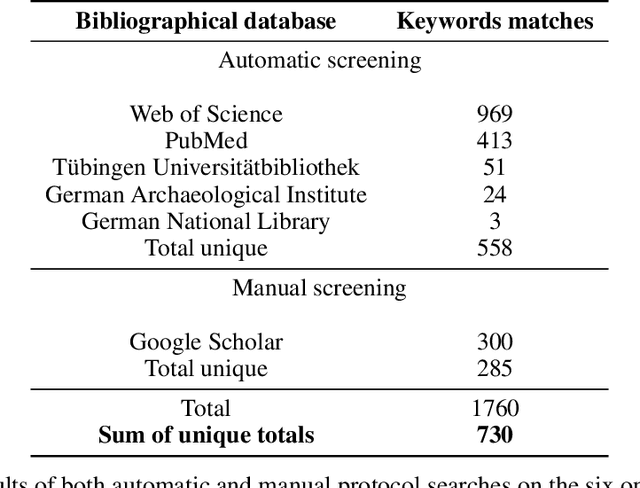
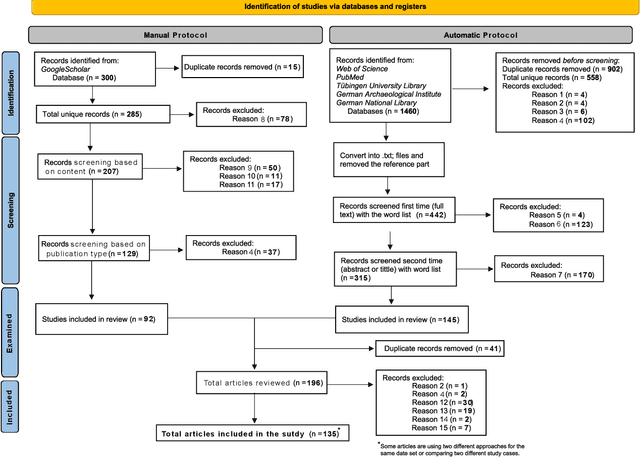
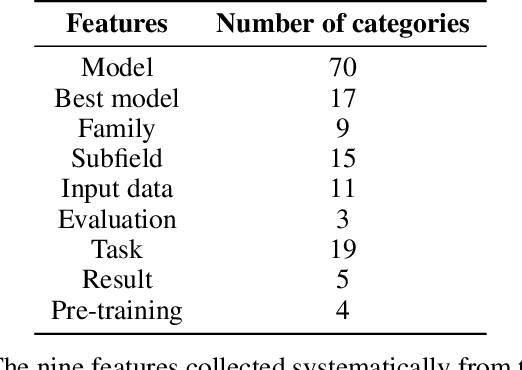
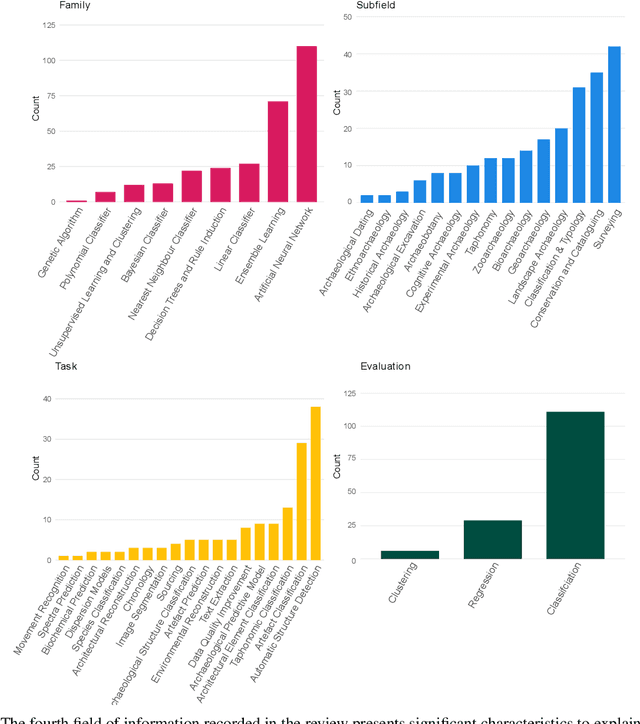
Abstract:Artificial intelligence and machine learning applications in archaeology have increased significantly in recent years, and these now span all subfields, geographical regions, and time periods. The prevalence and success of these applications have remained largely unexamined, as recent reviews on the use of machine learning in archaeology have only focused only on specific subfields of archaeology. Our review examined an exhaustive corpus of 135 articles published between 1997 and 2022. We observed a significant increase in the number of relevant publications from 2019 onwards. Automatic structure detection and artefact classification were the most represented tasks in the articles reviewed, followed by taphonomy, and archaeological predictive modelling. From the review, clustering and unsupervised methods were underrepresented compared to supervised models. Artificial neural networks and ensemble learning account for two thirds of the total number of models used. However, if machine learning is gaining in popularity it remains subject to misunderstanding. We observed, in some cases, poorly defined requirements and caveats of the machine learning methods used. Furthermore, the goals and the needs of machine learning applications for archaeological purposes are in some cases unclear or poorly expressed. To address this, we proposed a workflow guide for archaeologists to develop coherent and consistent methodologies adapted to their research questions, project scale and data. As in many other areas, machine learning is rapidly becoming an important tool in archaeological research and practice, useful for the analyses of large and multivariate data, although not without limitations. This review highlights the importance of well-defined and well-reported structured methodologies and collaborative practices to maximise the potential of applications of machine learning methods in archaeology.
SoilNet: An Attention-based Spatio-temporal Deep Learning Framework for Soil Organic Carbon Prediction with Digital Soil Mapping in Europe
Aug 07, 2023Abstract:Digital soil mapping (DSM) is an advanced approach that integrates statistical modeling and cutting-edge technologies, including machine learning (ML) methods, to accurately depict soil properties and their spatial distribution. Soil organic carbon (SOC) is a crucial soil attribute providing valuable insights into soil health, nutrient cycling, greenhouse gas emissions, and overall ecosystem productivity. This study highlights the significance of spatial-temporal deep learning (DL) techniques within the DSM framework. A novel architecture is proposed, incorporating spatial information using a base convolutional neural network (CNN) model and spatial attention mechanism, along with climate temporal information using a long short-term memory (LSTM) network, for SOC prediction across Europe. The model utilizes a comprehensive set of environmental features, including Landsat-8 images, topography, remote sensing indices, and climate time series, as input features. Results demonstrate that the proposed framework outperforms conventional ML approaches like random forest commonly used in DSM, yielding lower root mean square error (RMSE). This model is a robust tool for predicting SOC and could be applied to other soil properties, thereby contributing to the advancement of DSM techniques and facilitating land management and decision-making processes based on accurate information.
Inductive biases in deep learning models for weather prediction
Apr 06, 2023Abstract:Deep learning has recently gained immense popularity in the Earth sciences as it enables us to formulate purely data-driven models of complex Earth system processes. Deep learning-based weather prediction (DLWP) models have made significant progress in the last few years, achieving forecast skills comparable to established numerical weather prediction (NWP) models with comparatively lesser computational costs. In order to train accurate, reliable, and tractable DLWP models with several millions of parameters, the model design needs to incorporate suitable inductive biases that encode structural assumptions about the data and modelled processes. When chosen appropriately, these biases enable faster learning and better generalisation to unseen data. Although inductive biases play a crucial role in successful DLWP models, they are often not stated explicitly and how they contribute to model performance remains unclear. Here, we review and analyse the inductive biases of six state-of-the-art DLWP models, involving a deeper look at five key design elements: input data, forecasting objective, loss components, layered design of the deep learning architectures, and optimisation methods. We show how the design choices made in each of the five design elements relate to structural assumptions. Given recent developments in the broader DL community, we anticipate that the future of DLWP will likely see a wider use of foundation models -- large models pre-trained on big databases with self-supervised learning -- combined with explicit physics-informed inductive biases that allow the models to provide competitive forecasts even at the more challenging subseasonal-to-seasonal scales.
Hidden Latent State Inference in a Spatio-Temporal Generative Model
Sep 21, 2020


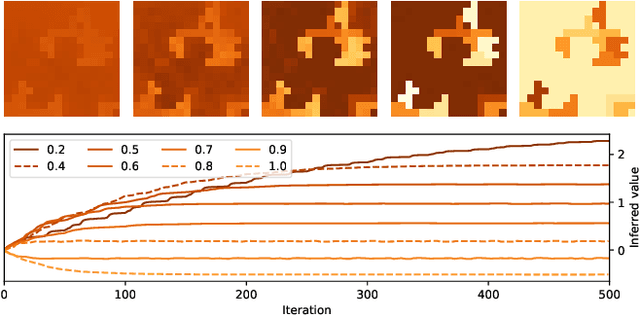
Abstract:Knowledge of the hidden factors that determine particular system dynamics is crucial for both explaining them and pursuing goal-directed, interventional actions. The inference of these factors without supervision given time series data remains an open challenge. Here, we focus on spatio-temporal processes, including wave propagations and weather dynamics, and assume that universal causes (e.g. physics) apply throughout space and time. We apply a novel DIstributed, Spatio-Temporal graph Artificial Neural network Architecture, DISTANA, which learns a generative model in such domains. DISTANA requires fewer parameters, and yields more accurate predictions than temporal convolutional neural networks and other related approaches on a 2D circular wave prediction task. We show that DISTANA, when combined with a retrospective latent state inference principle called active tuning, can reliably derive hidden local causal factors. In a current weather prediction benchmark, DISTANA infers our planet's land-sea mask solely by observing temperature dynamics and uses the self inferred information to improve its own prediction of temperature. We are convinced that the retrospective inference of latent states in generative RNN architectures will play an essential role in future research on causal inference and explainable systems.
Inferring, Predicting, and Denoising Causal Wave Dynamics
Sep 19, 2020
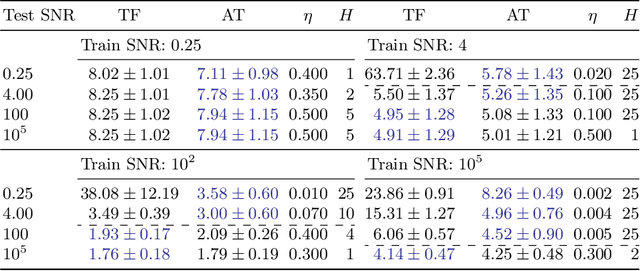


Abstract:The novel DISTributed Artificial neural Network Architecture (DISTANA) is a generative, recurrent graph convolution neural network. It implements a grid or mesh of locally parameterizable laterally connected network modules. DISTANA is specifically designed to identify the causality behind spatially distributed, non-linear dynamical processes. We show that DISTANA is very well-suited to denoise data streams, given that re-occurring patterns are observed, significantly outperforming alternative approaches, such as temporal convolution networks and ConvLSTMs, on a complex spatial wave propagation benchmark. It produces stable and accurate closed-loop predictions even over hundreds of time steps. Moreover, it is able to effectively filter noise -- an ability that can be improved further by applying denoising autoencoder principles or by actively tuning latent neural state activities retrospectively. Results confirm that DISTANA is ready to model real-world spatio-temporal dynamics such as brain imaging, supply networks, water flow, or soil and weather data patterns.
A Distributed Neural Network Architecture for Robust Non-Linear Spatio-Temporal Prediction
Dec 23, 2019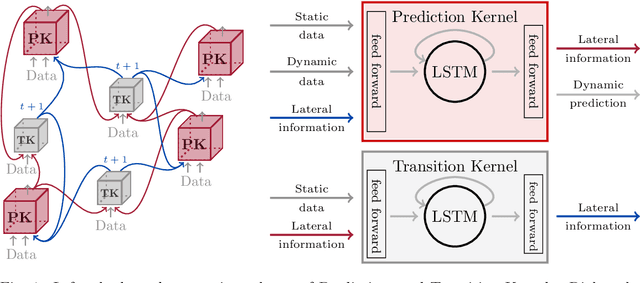
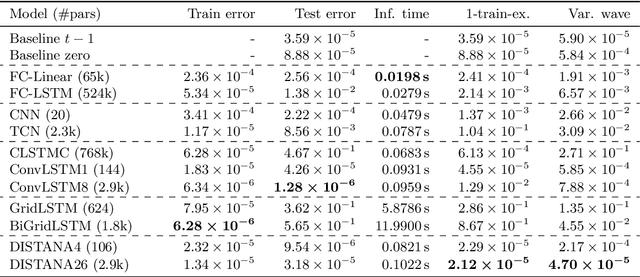
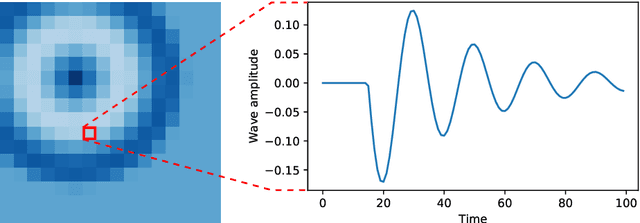

Abstract:We introduce a distributed spatio-temporal artificial neural network architecture (DISTANA). It encodes mesh nodes using recurrent, neural prediction kernels (PKs), while neural transition kernels (TKs) transfer information between neighboring PKs, together modeling and predicting spatio-temporal time series dynamics. As a consequence, DISTANA assumes that generally applicable causes, which may be locally modified, generate the observed data. DISTANA learns in a parallel, spatially distributed manner, scales to large problem spaces, is capable of approximating complex dynamics, and is particularly robust to overfitting when compared to other competitive ANN models. Moreover, it is applicable to heterogeneously structured meshes.
 Add to Chrome
Add to Chrome Add to Firefox
Add to Firefox Add to Edge
Add to Edge